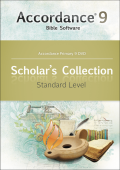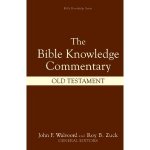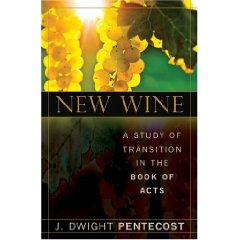 How To Buy a Great Bible
How To Buy a Great Bible
Article By: Kevin Stern, DTS Book Center Director
Buying a new Bible is one of the toughest purchases most Christians make. It’s hard enough to find a translation you love. Then there are hundreds of decisions after that. Here are some questions to ask that should make the process easier.
Translation—2011 is the 400th anniversary of the King James Version. It was easy then. Now, with more English translations available than at any time in history, where do you start? The first question to ask is how do I want to use the Bible? Will I be doing devotional reading or deep study? Is this a gift for a new believer or an old Bible study pro?
Bibles can be lined up on a continuum from translations that use a more word-for-word philosophy to Bibles that translate more thought-for-thought. The New American Standard’s word-for-word style makes it great for study, but with a twelfth-grade reading level, sometimes it can be hard to understand. The New Living Translation is much clearer English, but there are times I’d like to see it reflect more of the structure of the original languages. Most folks are doing a combination of things and are looking for a Bible in the middle of the spectrum like an NIV, ESV, or NET. If you’d like more help choosing a translation, you can talk with us in the Book Center or read How To Choose a Translation For All It’s Worth by Fee and Strauss.
Style—Once you’ve picked a translation, then ask yourself what special features you’d like to have in your new Bible. Is it going in a purse or on a desk? Do I want devotional helps or a plain text? Do I want study notes, maps, and a concordance? Or do I want a wide margin for my own notes? How big a font do I need? Some study Bibles could double as a coffee table, but I keep one in my briefcase that is really small and has a snap cover so the pages don’t get wrecked. The Bible I teach with is a large print, single-column, black letter because I think it’s easier to find my place when I look back and forth between it and my audience. No Bible is going to be able to have everything and still fit in your pocket. The key is to ask what features are important to you.
Binding—When you’ve found a Bible that has what you want, the last question to ask is what binding you’d like. Do I need a paperback, hardback, or leather? How much do I want to spend? Do I need it to lay flat? How long do I want it to last? The least expensive option is a paperback. If I’m giving Bibles away as part of an evangelism ministry, I want to be able to buy as many as I can with my budget. In college, I needed a hardback to have on campus—a big, black, leather Bible would not have communicated what I wanted at a Northern California university.
The newest bindings in Bibles are the synthetics in lots of colors and designs. Whether you’re looking for a sophisticated, two-color cover or a fun kid’s Bible, there are hundreds of options. These are a great option that replaces the old bonded leather binding. They’ll last about the same amount of time (5-10 years). Many of them are softer than the bonded, which are made from the scraps left over from the manufacture of genuine leather and never lose their stiffness.
If you’ve found a Bible you love and want to keep it for a long time or if you take notes in your Bible that you can’t bear to lose, buy genuine leather. Genuine leather will last much longer and the leather will become softer with use. Genuine Bibles usually cost $10 to $15 more than the synthetics or bondeds, but are worth the investment. Many publishers add lifetime warranties and sewn bindings to their genuine Bibles as well. Most genuine Bibles are made from cowskin or pigskin, but when people want the best, only calf or goat will do. Bibles made from calf, sheep or goat are as durable as genuine cow or pig leather, but will be much softer.
Bibles may be one of the hardest books to choose, but the reward in having or giving the right one is worth the research.
 A Reader’s Edition
A Reader’s Edition









 What’s in the Bible? Vol. 6: A Nation Divided
What’s in the Bible? Vol. 6: A Nation Divided owledge Commentary 2 vol set
owledge Commentary 2 vol set volume set has just recently become available again for purchase. The change to the set is solely aesthetic; leaving the actual content of the commentary untouched. The only difference between the new version and the old is its new cover. This set, as well as its separate individual volumes, are available through our physical store as well as
volume set has just recently become available again for purchase. The change to the set is solely aesthetic; leaving the actual content of the commentary untouched. The only difference between the new version and the old is its new cover. This set, as well as its separate individual volumes, are available through our physical store as well as 



 Introducing the New Testament: A Short Guide to Its History and Message
Introducing the New Testament: A Short Guide to Its History and Message  Bible: In the Beginning, V. 1
Bible: In the Beginning, V. 1
 New Wine: A Study of Transition in the Book of Acts
New Wine: A Study of Transition in the Book of Acts